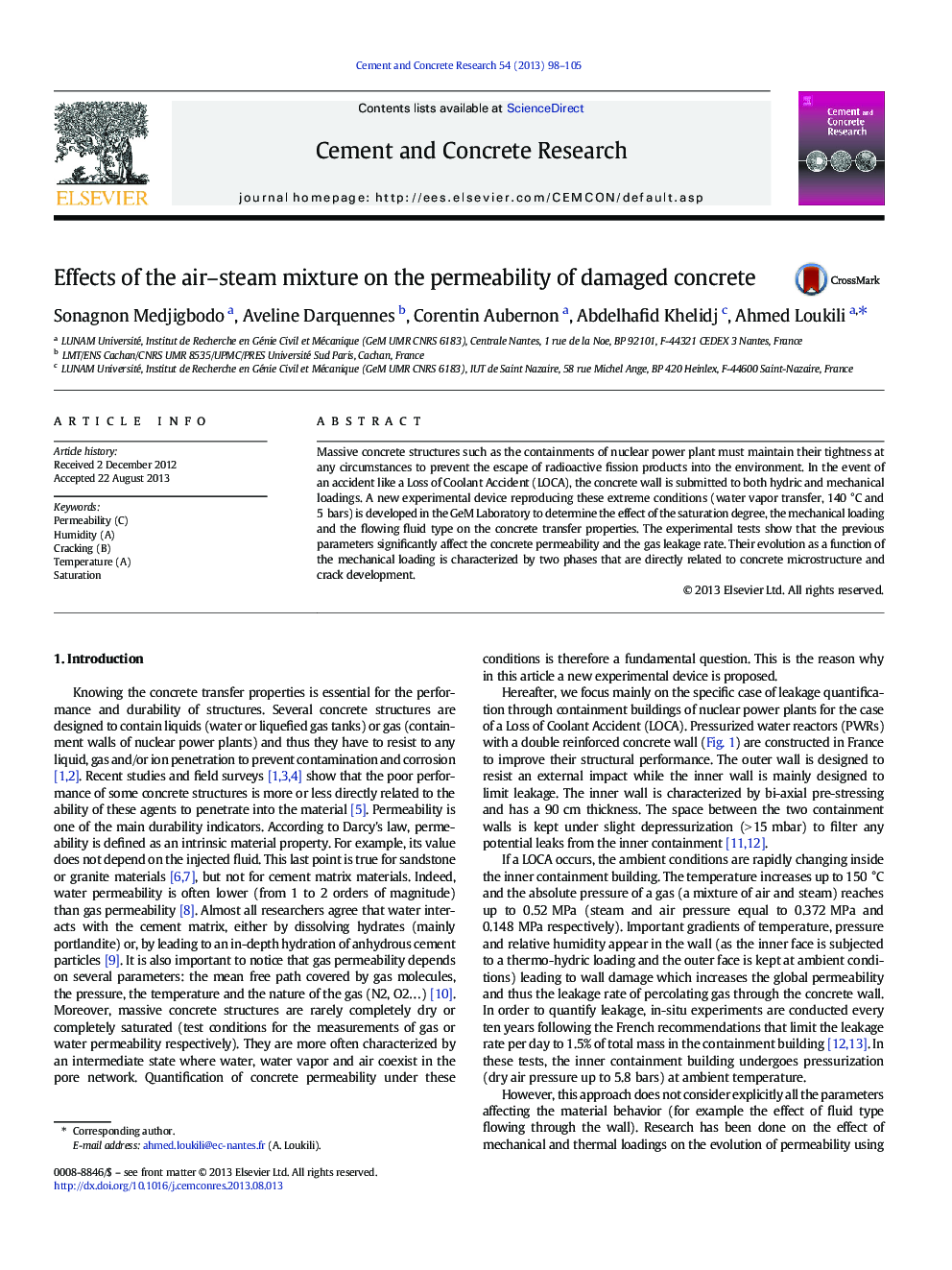| Article ID | Journal | Published Year | Pages | File Type |
|---|---|---|---|---|
| 1456445 | Cement and Concrete Research | 2013 | 8 Pages |
Massive concrete structures such as the containments of nuclear power plant must maintain their tightness at any circumstances to prevent the escape of radioactive fission products into the environment. In the event of an accident like a Loss of Coolant Accident (LOCA), the concrete wall is submitted to both hydric and mechanical loadings. A new experimental device reproducing these extreme conditions (water vapor transfer, 140 °C and 5 bars) is developed in the GeM Laboratory to determine the effect of the saturation degree, the mechanical loading and the flowing fluid type on the concrete transfer properties. The experimental tests show that the previous parameters significantly affect the concrete permeability and the gas leakage rate. Their evolution as a function of the mechanical loading is characterized by two phases that are directly related to concrete microstructure and crack development.
